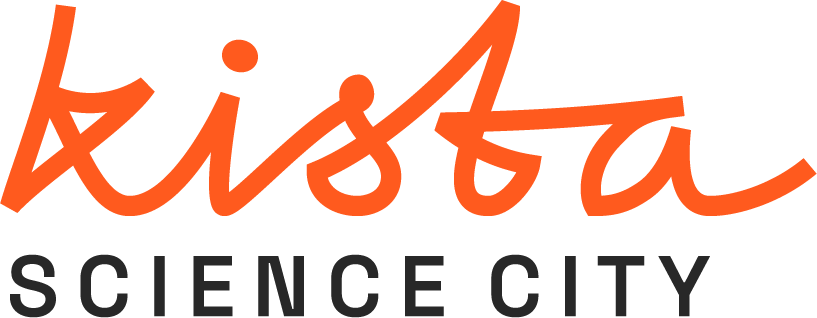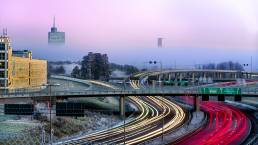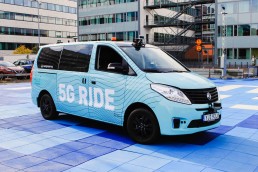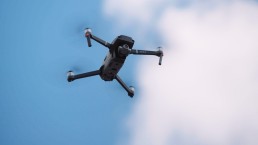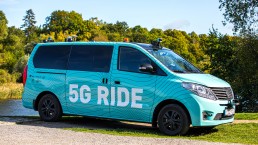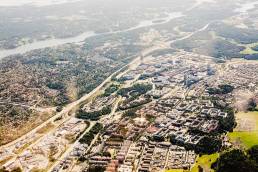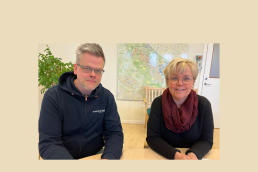Shaping the future of mobility with AI and multisensors
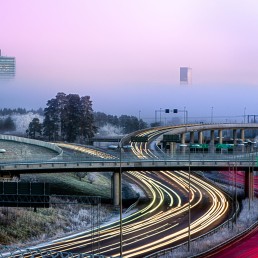
Smart City
AI and multisensors to improve urban mobility
There are today several technologies through which city traffic and pedestrian flows can be operated and manage. At the same time, and as a result of our increasing mobility behavior, cities face severe challenges with congestion, accidents and air pollution.
The utilization of sensing technology in our streets
The utilization of sensing technology in our streets comes with many possibilities, as sensing and imaging technologies are becoming advanced and collect data using various types of scanning cameras and sensors equipped with AI.
-We need to make transport smarter, more robust and more sustainable. And we also need to think about the public space, so that we make it more accessible, attractive and available for all the people. These tests are very important because we need a place where we can test new technology.” says Maria Holm, Project Manager at the City of Stockholm.
Viscando, Qamcom and Savantic are all involved in ongoing tests to promote better traffic flows based on real time data, using multisensor and AI technologies installed on the streets of Kista.
– Traditional ways of measuring traffic flows are usually based on induction lines under the road surface or on tubes laid on the streets. Our goal with the test in Kista is to evaluate whether existing technologies such as multisensors and AI-based based technologies, can provide better results and added value for the city planners, says Anna Chiara Brunetti, Project Manager at Qamcom.
– If we would be able to plan the public transportation system in a data-driven way, that would lead to much more attractive public transportation and a more sustainable city, says Claes Orsholm, Founder & CEO at Savantic.
Call for action
Are you too a Stockholm-based SME developing solutions with the potential to transform the automotive industry and transportation system? Would you like to demonstrate your solution to a wider audience, or test together with a potential business partner within the ICT or automotive sector? Please contact sara.nozkova@kista.com.
Intelligent traffic management
Multisensors is part of the focus area “Intelligent traffic management“, creating prerequisites for unique insights into current traffic flows. A process and phsysical place where businesses quick and effective can test and develop their tech and to compare solutions with other technology leaders.
Seeing through obstacles and around corners, the 5G Ride project rolls on
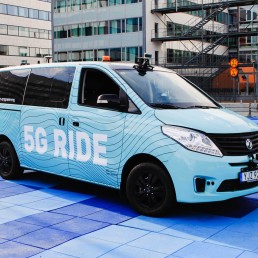
Drones
Seeing through obstacles and around corners, the 5G Ride project rolls on
The 2022 5G RIDE Demo Day on October 13 gathered more than 50 special invited guests and project partners who got a sneak preview of the latest technology updates.
This year’s demonstration focused on how new technology can be used to increase safety and security around autonomous vehicles in commuting traffic, hence offering a safer experience for travellers and other road users. The visitors got to experience how smart sensors on vehicles and in the surrounding infrastructure makes it possible for the vehicle to see through obstacles and around corners.
The sensors are an important addition to the project, as they measure positions and paths/route for all road users and sends this data in real time to Ericsson Innovation cloud, via 5G, where the data is processed, combined with other sources, and shared with the connected vehicle. The vehicle is acting upon the combined picture, from sensors, traffic tower, own cameras and the surrounding. In real time. During the demonstration we could see what happens if a person crosses the street if there is an obstacle on the path and how buildings and people are plotted on the onboard screens.
The technology enabling this is the 5G network and the traffic tower, as they fetch and share real-time data from the vehicle.
The ambition of the 5G RIDE project is to create conditions for an efficient and sustainable public transport where operators in traffic towers can support fleets of autonomous, electric vehicles to improve traffic planning, safety and reduce energy consumption. By taking a unified approach and combining technologies, the next step in the development of driverless automated vehicles is taken.
This project takes place in a collaboration between some of Sweden’s leading companies in mobility and technology. Kista Science City AB, Keolis, Ericsson, Telia, T-engineering, Viscando, Scania, Region Stockholm, intel and KTH. Working together to create a more environmentally smart and cost-efficient transport system.
For more information about the project
project manager Eleonor Sjödin Turah
eleonor.sjodinturah@kista.com
Sign up to get the latest news, updates and insights from Kista Science City
Nordic drone initiative
Nordic drone initiative
A platform for exchange of ideas between the Nordic countries and the rest of the world
The project
Together with other innovation clusters in the Nordics, Kista Science City founded the Nordic Drone Initiative. This project will strengthen the ties between the different clusters and help companies working with drones to learn from neighbors and form new alliances.
During the project duration, Kista Science City will represent its partners interests in dialogs with the Nordic cluster organizations, cities, and drone companies. The project creates a unique collaboration platform (first of its kind in the Nordics!) to discuss the various use areas for drones in the cities. And as the next step, act upon them through tests in real urban environment, such as Kista.
Partners
VTT, RISE, NORCE, Robots Expert, Bell Rock Advisors, Avinor, Katla Aero, Drone Nord, Gate 21, Mainbase, Flypulse, Nordic Edge, UAS Norway, LFV, Östergötland, Business Tampere
Funded by
Nordic Innovation
Summary
Together with other innovation clusters in the Nordics, Kista Science City founded the Nordic Drone Initiative. This project will strengthen the ties between the different clusters and help companies working with drones to learn from neighbors and form new alliances.
The purpose
- To identify and evaluate how drones can be used in the transport sector to provide the greatest benefit to society, business and the environment.
- Map the Nordic ecosystem for drones and the opportunities that this technology provides.
- Contribute to the development of drone technology for Nordic weather conditions.
- Propose the development of rule changes that enable drone transports and large-scale operations with vertical take-off and landing.
- Create a platform for continued research and innovation and developed international cooperation.

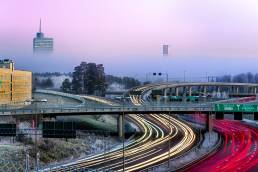
NDI members enjoy access to a unique network of drone experts, insights and further research/commercial project opportunities (e.g. H2020) with top Nordic drone organisations. NDI accepts new members with emphasis on commercial actors able to contribute resources in the development work.
Funded by Nordic Innovation
Nordic Innovation is an organization under the Nordic Council of Ministers and aims to make the Nordics a pioneering region for sustainable growth and works to promote entrepreneurship, innovation and competitiveness in Nordic business. Nordic Innovation supports programs and projects which contribute in fulfilling the goals of the Cooperation Program for Innovation and Business 2018-2021 which is decided by the Nordic Ministers for Business and Innovation.
Project Template
5G Ride
Autonomous vehicles
The project
5G Ride is a concept for self-driving, 5G-connected electric vehicles used in public transport. In the autumn of 2020, the vehicles were tested in traffic at Royal Djurgården. In 2021 the project continues, focusing on the development of the Connected Control Tower. Urban ICT Arena manages the project in close partnership with Ericsson, Keolis, Telia, Intel and T-Engineering.
The purpose of the project is to demonstrate safe monitoring with 5G, transfer the driver to an outside position of the vehicle and releasing resources for improved public transports. The 5G network’s unique technical features, including enhanced security, extremely high data speeds combined with low latency, means that the connected buses can respond in real time to commands from the centralized control tower.
In 2021, additional funding has been added to the project and the focus for the continuation of the project is the further development of the Connected Control Tower. One part of this is how to use more data, for example about the route, the vehicle or the connection strength, to make it possible to prevent any problems, plan routes and schedules better and act more swiftly should problems arise. New collaborations will be added with KTH the Royal Institute of Technology, the City of Stockholm and the Stockholm Region.
Project period
2020-2022
Partners
Urban ICT Arena
Keolis
Ericsson
Telia
Intel
Scania
Viscando
T-Engineering
Contact
David Eskilsson, Edeva
david.eskilsson@edeva.se
Summary
5G Ride is a concept for self-driving, 5G-connected electric vehicles used in public transport. In the autumn of 2020, the vehicles were tested in traffic at Royal Djurgården. In 2021 the project continues, focusing on the development of the Connected Control Tower. Urban ICT Arena manages the project in close partnership with Ericsson, Keolis, Telia, Intel and T-Engineering. The purpose of the project is to demonstrate safe monitoring with 5G, transfer the driver to an outside position of the vehicle and releasing resources for improved public transports.


The pilot
The pilot in 2020 was the result of a unique collaboration between some of Sweden’s most prominent and well-known organizations within the fields of mobility and technology. The knowledge hub and testbed Urban ICT Arena managed the initiative, with Keolis as bus operator. Ericsson provided the technical solution for the connected control tower, a solution that will be further developed during 2021. Telia provideded the 5G-connectivity in collaboration with Ericsson and deployed 5G at Djurgården specifically for this project. Intel delivered analytics capabilities and the technology for the processing across the network including the IT-system in the vehicles and the control tower, as well as the mobile network. T-Engineering, a Swedish technology firm, delivered vehicle and self-driving technology.
HRH Prince Daniel was among the dignitaries to attend the official inauguration ceremony outside Tekniska museet.
The project is funded by Drive Sweden, Vinnova and FFI.
Article Template

Smart City
AI and multisensors to improve urban mobility
There are today several technologies through which city traffic and pedestrian flows can be operated and manage. At the same time, and as a result of our increasing mobility behavior, cities face severe challenges with congestion, accidents and air pollution.
Last edited
2023-01-28
Duration of reading
4m
The utilization of sensing technology in our streets
The utilization of sensing technology in our streets comes with many possibilities, as sensing and imaging technologies are becoming advanced and collect data using various types of scanning cameras and sensors equipped with AI. This allows accurate information on for example traffic motion per minute, speed, and which types of vehicles are passing at certain time periods.
This is why we have decided to gather innovative ICT companies in Kista to test and evaluate their technologies in real urban environments, a project run by Sara Nozkova, Mobility Lead, Kista Science City.
-We need to make transport smarter, more robust and more sustainable. And we also need to think about the public space, so that we make it more accessible, attractive and available for all the people. These tests are very important because we need a place where we can test new technology.” says Maria Holm, Project Manager at the City of Stockholm.
Viscando, Qamcom and Savantic are all involved in ongoing tests to promote better traffic flows based on real time data, using multisensor and AI technologies installed on the streets of Kista.
– Traditional ways of measuring traffic flows are usually based on induction lines under the road surface or on tubes laid on the streets. Our goal with the test in Kista is to evaluate whether existing technologies such as multisensors and AI-based based technologies, can provide better results and added value for the city planners, says Anna Chiara Brunetti, Project Manager at Qamcom.
– If we would be able to plan the public transportation system in a data-driven way, that would lead to much more attractive public transportation and a more sustainable city, says Claes Orsholm, Founder & CEO at Savantic.
Call for action
Are you too a Stockholm-based SME developing solutions with the potential to transform the automotive industry and transportation system? Would you like to demonstrate your solution to a wider audience, or test together with a potential business partner within the ICT or automotive sector? Please contact sara.nozkova@kista.com.
Intelligent traffic systems
Multisensors is part of the focus area “Intelligent traffic systems“, creating prerequisites for unique insights into current traffic flows. A process and phsysical place where businesses quick and effective can test and develop their tech and to compare solutions with other technology leaders.
Intelligenta Trafiksystem
(Pressrelease 20221018)
Trafiken i storstäderna är inte alls så smart som den borde vara.
Nu testas ny teknik som ska ändra på det.
Med intelligent trafikanalys och trafikstyrning ska bilköerna kapas, trafiken flyta bättre och städer bli mer hållbara.
Just nu engagerar sig en rad innovativa teknikbolag i flera parallella trafikprojekt i Kista norr om Stockholm i syfte att testa och utveckla lösningar som kan bidra till effektivare trafikflöden i storstäderna.
Siktet är inställt på att radikalt minska bilköer, trafikbuller, utsläpp av giftiga partiklar och ohälsa – och det första steget är att dra nytta av teknik som kan läsa av trafiksituationen på ett mer intelligent sätt än vad som görs idag.
De nya lösningar som testas och utvecklas bygger på användning av artificiell intelligens och edge kombinerat med Lidar, Radar och annan sensorteknik i framkant. Tesla drar nytta av samma teknik i sina självkörande fordon för att förstå trafikbilden och snabbt fatta beslut utifrån hur det ser ut med bilar, fotgängare, cyklister, hinder på vägen och så vidare.
I huvudsak går projekten i Kista – och även till viss del Hornsgatan i centrala Stockholm – ut på att fånga in och optimera relevant och korrekt data, och att genom effektiv analys bättre förstå trafikflöden, samt att hitta den optimala uppsättningen av olika tekniker för att styra trafiken.
– Trafiken styrs mer optimalt med realtidsförståelse av den aktuella trafikmiljön, hastigheten på trafiken, närvarande fordonsslag och så vidare, säger Lucas Uhlén på Kista Science City, som ligger bakom satsningen i samarbete med Stockholms stad och andra partners.
– Det är banbrytande att kunna jämföra så många tekniker på samma ställe. Få platser i Europa kan idag tillhandahålla liknande förutsättningar för test och utveckling av teknik.
Projekten är attraktiva för teknikföretag i den absoluta framkanten av flera skäl. Den största uppsidan är möjligheten att få testa sin teknik i ”krattad bana” och samtidigt kunna ha en tät dialog med framtida potentiella kunder, som till exempel Stockholms stad. På så sätt maximeras företagens och samhällets möjligheter att vidareutveckla tekniker och processer. Dessutom används resultaten som dataunderlag till ny forskning och utveckling.
Här är några exempel på vad som kan komma att möjliggöras när trafiken kan analyseras smartare:
- Dynamiskt anpassade trafikljus där tidsintervallerna mellan rött och grönt ändras löpande baserat på en lång rad olika trafikparametrar
- Dynamiska hastighetsbegränsningar utifrån hur trafiken ser ut just nu
- Intelligenta zoner med hjälp av geofencing
- Guidning till närmast lediga p-platser
- Guidning av tung trafik för att reducera buller och giftiga partiklar
För mer detaljer kring projekten, kontakta: Lucas Uhlén, Kista Science City AB.
Newsletter Kista Science City 2022
October 27, 2022
International world class researchers and speakers made the conference Digitalize in Stockholm a success and together with the inauguration of the Senseable Stockholm Lab’s new premises at KTH – the last few weeks has given us great opportunities to get new insights and to form new research projects. And we continue to gather the research and development community in Kista the first Tuesday of every month for Tech Tuesdays, and now also AI breakfasts every second Friday.
Kista Science City is home to some of Sweden’s most prominent researchers in cyber security as we host the Department of Computer Science (SU), RISE Cyber range and FOI (Swedish Defence Research Agency). At Kista Science City we are now, together with Södertälje Science Park, starting a project with the aim to bring the expertise and knowledge of the experts to small and middle-sized companies. Let us know if you are interested in joining the project.
In this newsletter you can read more about some of the recent events and projects ongoing at the moment. We are always here for you if you would like more information, or just want to drop by for a coffee.
Newsletter from Kista Science City October 22
September 13, 2022
We are off to a flying start this autumn! From our experience, it’s sharing ideas, insights and knowledge that create a meaningful difference. That’s why we at Kista Science City focus on facilitating connections.
Many of the activities that will take place during the autumn targets some of the challenges our society is facing right now. One example being the electric charging competition we’ve been running with Stockholms stad and Vinnova. Being able to announce the winner of the competition was a good start of our activities this autumn! A strong focus on technologies that makes a difference for both climate and people.
We are also extra happy to welcome new students, with their optimism, curiosity and great spirits, into our community. A full programme of activities connecting students with companies in the area lies ahead, including the KTH degree project fair that you can read more about below. Get in touch if you want to know more.
And don’t miss to sign up for the autumn’s first Tech Tuesday hosted by IBM, focusing on Design for AI.
Hope to see you soon!
/ Karin Bengtsson, CEO, Kista Science City AB
5G Ride
5G Ride
Autonomous vehicles
The project
5G Ride is a concept for self-driving, 5G-connected electric vehicles used in public transport.
The purpose of the project is to develop and test connected autonomous vehicles to get closer to an implementation of autonomous vehicles on public roads.
The 5G network’s unique technical features, including enhanced security, extremely high data speeds combined with low latency, means that the connected buses can respond in real time to commands from the centralized control tower.
In 2021, additional funding was added to the project and the focus for the continuation of the project is the further development of the Connected Control Tower. One part of this is how to use more data, for example about the route, the vehicle or the connection strength, to make it possible to prevent any problems, plan routes and schedules better and act more swiftly should problems arise.
Project period
2020-2025
Partners
Keolis
Ericsson
Telia
Intel
Scania
Viscando
T-Engineering
Royal Institute of Technology
City of Stockholm
Region Stockholm
KTH
AppliedAutonomy
VY
Contact
Eleonor Sjödin Turah
eleonor.sjodinturah@kista.com
Summary
5G Ride is a concept for self-driving, 5G-connected electric vehicles used in public transport.


The pilot
The pilot in 2020 was the result of a unique collaboration between some of Sweden’s most prominent and well-known organizations within the fields of mobility and technology.
The knowledge hub and testbed Urban ICT Arena managed the initiative, with Keolis as bus operator. Ericsson provided the technical solution for the connected control tower, a solution that will be further developed during 2021.
Telia provideded the 5G-connectivity in collaboration with Ericsson and deployed 5G at Djurgården specifically for this project. Intel delivered analytics capabilities and the technology for the processing across the network including the IT-system in the vehicles and the control tower, as well as the mobile network. T-Engineering, a Swedish technology firm, delivered vehicle and self-driving technology.
HRH Prince Daniel was among the dignitaries to attend the official inauguration ceremony outside Tekniska museet.
Nytt innovationsverktyg hjälper Stockholms stadsdelar
Nytt innovationsverktyg hjälper Stockholms stadsdelar
Rinkeby-Kistas stadsdelsförvaltning har sett stora framgångar med innovationsverktyget Ignite Public.
Nu kan även andra stadsdelar använda verktyget som del av sitt innovationsarbete för att främja nytänkande och den innovationskraft som behövs för att möta de utmaningar som ligger framför oss.
Så här fungerar verktyget.
I slutet av november fick Rinkeby-Kistas stadsdelsförvaltning ta emot Ignite Swedens nationella utmärkelse ”Ignite Master of Startups (Public sector)” för att vara den offentliga aktör som startat flest samarbeten med innovativa startups under 2021. Hela sju stycken samarbeten.
(Mer om det kan du läsa i den här intervjun med Robin Jägestedt, utvecklingsansvarig i Rinkeby-Kista)
Totalt har 33 pilotprojekt mellan offentlig sektor och startups initerats över landet hittills. Exempel på pilotsamarbeten är mätning av besöksflöden i medborgarservice lokaler, röstigenkänning, geo-tagging kring Pelle Svanslös för att attrahera besökare och aktivera barn, computer vision för att minska smittspridning av covid-19 inomhus, och vattenbesparing i tvättstugor
Därför är det värt att samarbeta med startups
Verktyget Ignite Public går ut på att testa nya innovativa lösningar på reella behov genom att genomföra små, agila pilotprojekt tillsammans med startups. Genom arbetet skapas fler, och fördjupade, insikter om hur man kan samarbeta med startups för att öka digitaliserings- och hållbarhetstakten bland medarbetare inom kommunen.
Varför samarbeta med startups? Så här svarar Mikaela Färnqvist, projektledare för Ignite Public på Kista Science City:
– Startups och scaleups ligger i framkant när det gäller att jobba med digitalisering och skapa innovativa lösningar för att möta de stora samhällsutmaningarna såsom miljö och energi, en åldrande befolkning, cirkulära kretslopp och integration. Därför är det viktigt för vår framtid att de utgör en självklar del av offentlig sektors innovationsarbete och leverantörsnätverk.
Förde in erfarenheterna från den offentliga sektorn
Ignite Public bygger på Ignite Swedens verifierade metod för att matcha behov i näringlivet – i storbolag som till exempel IBM, AlfaLaval, Sony, och Ikea – med nya innovativa lösningar hos svenska startups. Under 2019 och 2020 fick Kista Science City finansiering från Tillväxtverket för att anpassa metoden till offentliga verksamheter.
Karin Bengtsson, vd på Kista Science City, berättar:
– Jag ville föra in mina erfarenheter från att jobba med den offentliga sektorn. Det är speciella förutsättningar som råder där som man behöver ta hänsyn till.
Det modifierade verktyget döptes till Ignite Public och innehåller bland annat en modul för att få behovsägare, ledning, upphandlare och IT med på tåget redan från början. Utvecklingen av verktyget har fortsatt sedan dess i samarbete med ett tiotal olika offentliga aktörer. Processen säkerställer nu samarbete mellan offentliga verksamheter och startups, och banar väg för en effektiv och kvalitetssäkrad process.
Innovationsverktygets fem delar
1. Mobilisera
Redan från början säkras förankring, mandat och budget för att kunna gå vidare med pilotprojekt senare i processen, även om dessa projekt formas först senare. Ett projektteam skapas bestående av ledning, behovsägare, it, upphandling och Kista Science City.
2. Behovsinventering
Som facilitator av verktyget säkerställer Kista Science City att fånga in de verkliga behov som finns i verksamheten. Efter intervjuer, eller workshops, med flera olika personer i förvaltningarna kartläggs och prioriteras de behov som tas vidare i processen för att matchas mot nya innovativa lösningar.
3. Matchning
Utifrån de identifierade behoven tar Kista Science City hjälp av Ignite Swedens* nätverk och databas av över 2 000 startups från hela landet och presenterar ett urval som skulle kunna lösa de identifierade behoven. Efter att, tillsammans med Kista Science City, ha identifierat de startups man vill träffa förbereds samtliga startups och behovsägare för att träffas på digitala 20-minutersmöten enligt en viss mötesstruktur. I genomsnitt leder 50 procent av alla första möten till vidare dialog och uppföljning.
4. Pilot
För att skapa ett bra samarbete i de pilotprojekt som utformas efter matchningsdialogerna är Kista Science City med och stöttar med allt från juridiska avtal till att coacha i genomförandeprocessen. Det ger trygghet både beställaren och för startupbolaget.
5. Utvärdering
En viktig del av Ignite Public är lärandet – att bli ännu bättre på att samarbeta med startups. Utvärderingen av de pilotprojekt som genomförts, och processen i sin helhet, ger en djupare förståelse för hur samarbeten med startups kan användas i verksamhetens övergripande innovationsarbete.
* Ignite Sweden är ett nationellt program inom SISP, och drivs av inkubatorer och science parks från hela Sverige. Ignite Sweden är delfinansierat av Vinnova och Energimyndigheten, samt näringsliv och offentlig sektor.
Att upphandla en pilot
När vi jobbar med Ignite Public som verktyg involveras alltid inköps- eller
upphandlingsansvariga tidigt i arbetet för att ges rätt förutsättningar för att kunna arbeta strategiskt och att kunna välja vilket upphandlingsförfarande som passar varje enskild beställande myndighet. Ibland kan det vara en bra lösning att direktupphandla piloten,
ibland kan det vara bättre att handla upp både pilot och
uppskalning från start. Läs gärna mer i guiden som tagits fram för att stötta beställande myndigheter i pilotprocessen tillsammans med startups där bland annat ett urval av LOU förfaranden listas med fördelar och nackdelar.
Flera kommuner med i utvecklingen
De offentliga aktörer som tillsammans med Kista Science City och Ignite Sweden har utvecklat innovationsverktyget Ignite Public är:
Rinkeby-Kista stadsdelsförvaltning
Uppsala kommun
Stockholms Hamnar
Södertälje kommun
Järfälla kommun
Kalmar kommun
Linköpings kommun
Region Dalarna
Umeå kommun
Sveriges Allmännytta genom Digitaliseringsinitiativet
SKR
Levande labb för innovation
Så blev Rinkeby-Kista dagliga verksamhet ett levande labb för innovation
Kista Science City skapar systematiskt win-win-win-kopplingar mellan offentlig sektor, akademi och näringsliv för att stärka den vetenskapliga miljön i stadsdelen.
Ett av de fruktsamma samarbetena som skapats är det mellan Institutionen för data- och systemvetenskap vid Stockholms universitet och Rinkeby-Kistas dagliga verksamhet.
Verksamheten har blivit ett levande labb för innovation.
Flera av de 70 brukarna i den dagliga verksamheten involveras i när högskolestudenter från Institutionen för data- och systemvetenskap vid Stockholms universitet utvecklar nya lösningar för ökad delaktighet och inkludering.
– Genom samarbete möjligs för våra studenter att designa lösningar med verkliga utmaningar i åtanke, vilket är det otroligt intressant och givande. Det är mer meningsfullt att utveckla något som en viss grupp av personer kan få användning för, säger Thomas Westin på Stockholms universitet.
Han är universitetslektor på Institutionen för data- och systemvetenskap, och forskar på området inkluderande design och tillgänglighet. Han ser den dagliga verksamheten som en fantastisk arena för att testa tillgänglighetsdesign. Och det gör även Anna Ohlsén, biträdande enhetschef för Rinkeby-Kistas daglig verksamheter:
– Om man gör lösningar tillgängliga för vår målgrupp, så är de tillgängliga för alla, konstaterar Anna.
Del av en vision om att göra hela Kista till en testbädd
För Karin Bengtsson, vd på Kista Science City och den som initierade kontakten mellan den dagliga verksamheten och universitetet, är samarbetet en del av hennes vision om att göra hela Kista till en testbädd för akademin, startup-världen och verksamheter som vill utveckla och skapa nya innovationer.
– Vi har i flera år jobbat systematiskt med att skaffa oss koll på olika aktörernas intressen, behov och kompetenser och hitta vägar för att matcha dessa, och se hur de kan skapa nya värden tillsammans.
Idén om ett samarbete med akademin har Anna Ohlsén haft länge.
– Det har varit en dröm för mig att vara med i utveckling av teknik för att underlätta för funktionsnedsatta. Jag försökte en gång för 15 år sedan att få kontakt med akademin men det gick inte riktigt att nå hela vägen fram, säger Anna Ohlsén.
När hon berättade om sin dröm för Kista Science City gick det lättare. Karin Bengtsson berättar:
– Vi visste att Stockholm universitet jobbar med spel och tillgänglighet, och att de är mycket starka på området människor, teknik, spel och interaktion, så jag hörde av mig dit. Ett år senare är samarbetet i full gång.
Hur kan vardagen bli bättre?
Tillgänglighetsdesign går ut på att spel, appar och hjälpmedel ska kunna användas av alla, säger Thomas och utvecklar:
– Det kan till exempel vara att göra knappar på digitala skärmar tillräckligt stora för att personer med nedsatt finmotorik i händerna ska kunna trycka på dem, eller att göra det möjligt att ställa om till monoljud så att personer med ensidig hörselnedsättning kan höra, eller att lägga till en alternativ text till bilder så att en blind person kan få det uppläst vad bilden föreställer.
Alla i den dagliga verksamheten har någon form av intellektuell funktionsnedsättning, autism eller autismliknande tillstånd. Flera har dessutom fysiska begränsningar. Hur kan deras vardag blir enklare? Bättre? Roligare? Det är sådant som Thomas Westin och hans studenter tittar på. Anna berättar:
– En brukare kan exempelvis tycka om att vattna blommorna, men har svårt att förstå hur mycket vatten som är lagom. Där skulle det behövas någon hjälp. Han kan man ta fram en lösning så att man förstår när det är lagom så att det inte blir för mycket? säger Anna.
Kanske ett spel rent utav?
– I höst ska jag försöka få studenter att nappa på att göra ett eller två spel som fungerar för den här målgruppen, säger Thomas.
– Det skulle vara helt fantastiskt, för det behövs verkligen! svarar Anna spontant och förklarar:
– Tyvärr är det svårt att hitta spel som är på en lagom nivå för våra deltagare. Antingen är spelen alldeles för svåra, eller så är de gjorda för små barn.
Undersöker hur enkäter kan bli mer inkluderande
Thomas högskolestudenter har bland annat börjat med att undersöka hur enkäter ska utformas så att alla i daglig verksamheten i Rinkeby-Kista kan förstå dem. Det är något som verkligen behövs, enligt Anna:
– Sedan ett par år har SKR, Sveriges kommuner och regioner, gett personer inom LSS möjligheten att vara med i en brukarundersökning. Det är vällovligt, och intentionerna är säkert goda, men enkätverktyget och frågornas utformning exkluderar många i målgruppen. Alla kan inte svara på frågan ”Hur trivs du på ditt jobb?”. De kan behöva se en bild från jobbsituationen för att förstå. Frågorna måste kunna anpassas på individnivå, annars blir det kinesiska. Sådant har studenterna jobbat med.
”De tillför sin expertis på tillgänglighet”
Anna berättar hur deltagarna i dagligverksamheten uppskattar att få vara delaktiga i utvecklingen:
Samarbetet handlar inte bara om utveckling, utan även att hitta lösningar som gör skillnad här och nu. En kvinna har exempelvis fått hjälp att anpassa ett verktyg (Tobii eyetracking) som gör det möjligt för henne att styra en skärm med ögonen.
– En så enkel sak som att hon kunde ta en bild på sig själv. Hon blev överlycklig att hon kunde göra det själv. Det går inte att värdesätta vad det betyder, säger Anna.
